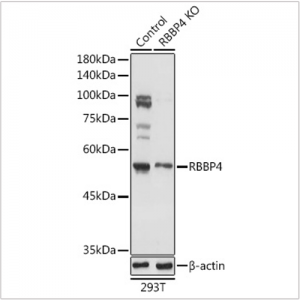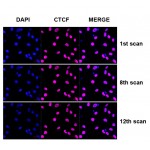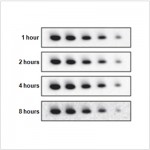| Reactivity: | Human |
| Applications: | WB, ELISA, ChIP |
| Host Species: | Rabbit |
| Isotype: | IgG |
| Clonality: | Polyclonal antibody |
| Gene Name: | RB binding protein 4, chromatin remodeling factor |
| Gene Symbol: | RBBP4 |
| Synonyms: | NURF55; RBAP48; lin-53; P4 |
| Gene ID: | 5928 |
| UniProt ID: | Q09028 |
| Immunogen: | Recombinant fusion protein containing a sequence corresponding to amino acids 1-425 of human RBBP4 (NP_005601.1). |
| Dilution: | WB 1:500-1:1000 |
| Purification Method: | Affinity purification |
| Concentration: | 1.17 mg/mL |
| Buffer: | PBS with 0.02% sodium azide, 50% glycerol ,pH7.3. |
| Storage: | Store at -20°C. Avoid freeze / thaw cycles. |
| Documents: | Manual-RBBP4 polyclonal antibody |
Background
This gene encodes a ubiquitously expressed nuclear protein which belongs to a highly conserved subfamily of WD-repeat proteins. It is present in protein complexes involved in histone acetylation and chromatin assembly. It is part of the Mi-2 complex which has been implicated in chromatin remodeling and transcriptional repression associated with histone deacetylation. This encoded protein is also part of co-repressor complexes, which is an integral component of transcriptional silencing. It is found among several cellular proteins that bind directly to retinoblastoma protein to regulate cell proliferation. This protein also seems to be involved in transcriptional repression of E2F-responsive genes. Three transcript variants encoding different isoforms have been found for this gene.
Images
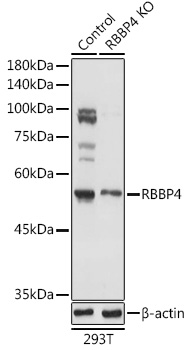 | Western blot analysis of lysates from wild type (WT) and RBBP4 knockout (KO) 293T cells, using [KO Validated] RBBP4 Rabbit pAb (A13934) at 1:1000 dilution. Secondary antibody: HRP-conjugated Goat anti-Rabbit IgG (H+L) (AS014) at 1:10000 dilution. Lysates/proteins: 25μg per lane. Blocking buffer: 3% nonfat dry milk in TBST. Detection: ECL Basic Kit (RM00020). Exposure time: 1s. |
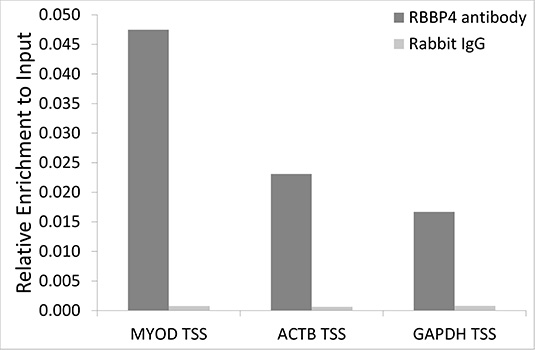 | Chromatin immunoprecipitation analysis of extracts of 293T cells, using RBBP4 antibody (A13934) and rabbit IgG. The amount of immunoprecipitated DNA was checked by quantitative PCR. Histogram was constructed by the ratios of the immunoprecipitated DNA to the input. |
You may also be interested in:

